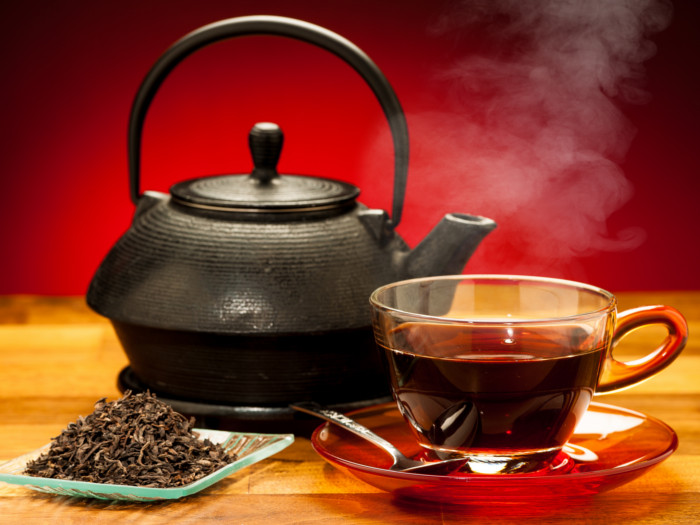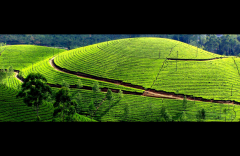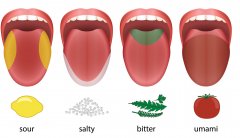How to look at black tea? How to choose black tea the method of distinguishing the advantages and disadvantages of black tea is explained in detail
The importance of quality
I am not saying that all tea workers in China are in a similar ideal state, at least when most tea production still focuses on price competitiveness rather than quality advantage. However, as more consumers begin to understand and demand quality, producers will be under pressure to learn to reward workers for better skills.
It does not make the poor in the less developed world fairer by artificially setting up third-party oversight, such as so-called "fair trade". Only real market forces can maintain a world free of or close to slavery in some tea-producing countries, which you, as a consumer, pretend not to see when buying cheap tea produced in large quantities.
Therefore, the importance of quality is the key to human sustainable development, at least within the scope of tea, if nothing else.
For health.
Well, if you don't care much about what those country folk are doing, if the delicacy of the tea doesn't impress you, you may worry about your health.
For decades, the scientific community has conducted in-depth research on the health benefits of tea drinking, and the results confirm some old ideas. However, the beneficial benefits come with a problem-your plastic bottled or instant tea won't have this effect. The data confirm that high-quality tea is not only more potent, with higher levels of theanine and flavonoids, but also less of what people don't tell you when making tea.
In the face of endless challenges in life, enjoying a cup of good tea is an honest daily pleasure that everyone deserves to have, as long as he can tell good tea from good tea.

How to identify high quality tea
Whether you are a beginner tea or have been drinking tea for many years, it is important to be able to identify high quality loose leaf tea. Just relying on your four senses can help you become a tea taster. Here are every step you need to pay attention to. Tea quality support
Vision: in a broad sense, there are two kinds of tea processing: CTC (cutting, tearing, rolling) and tradition. In the CTC method, the tea is fed into a machine, which cuts, tears and rolls the tea into small particles. The CTC process is suitable for tea bags and can quickly produce thick black brewing, although sometimes at the expense of the more subtle aroma of the tea. In the orthodox (or "long leaf") method, tea is carefully treated to ensure minimal damage. Traditionally made tea is rolled up, retaining the aromatic compounds of the tea and the complex taste of the tea. Therefore, high-quality bulk tea should look like tea. Avoid loose tea because it looks fragile or contains a lot of stems and wood fragments because it tastes and is less complex. When you make tea, the tea should unfold slowly.
Touch: generally speaking, the touch of high-quality dry tea should be the appearance: smooth, complete and strong. It should also have a slight weight in your hand; if your tea feels as light as a feather, it may indicate that it is overdry or aging. High-quality loose leaves should not be broken or disintegrated gently. The tea leaves should be smooth to the touch.
Smell: no matter what kind of tea, high-quality tea has a unique aroma. If you inhale deeply and smell only a small amount of smell, it may be a sign of poor quality or stale tea. Green tea should smell like grass, light and fresh, while black tea should smell like dirt, flowers and sweetness. When soaked, good tea should be deeply aromatic and amplify the unique aroma of dried tea.
Palate: good tea will have a strong, recognizable taste and taste. Drink slowly and let the tea roll over different parts of the tongue; you should be able to notice different tastes and tastes. The green tea with the best taste is smooth and refreshing, while the black tea is more full-bodied. No matter what type of tea you drink, good tea activates different flavors on your tongue when you drink it. The taste is not obvious, too astringent or unpleasant chemical taste indicates that you are drinking shoddy or old tea.
Important Notice :
前街咖啡 FrontStreet Coffee has moved to new addredd:
FrontStreet Coffee Address: 315,Donghua East Road,GuangZhou
Tel:020 38364473
- Prev

Why is Sri Lanka black tea better than Chinese black tea? Is Ceylon tea passed down from China?
Ham and luncheon meat in tea For me, good tea and popular tea are completely different products. It's more different than Brie de Meaux and Kraft cheese slices; or ham is the difference between lunch meat. On the other hand, few people realize this because of the lack of mass access to this quality. I can have a lunchmeat sandwich once in a while, but I'm not
- Next

The tea is very bitter. Why is it? There is a kind of tea. What kind of tea is sweet after drinking it?
Tea and wine have a lot in common. High-quality examples are identified by the environmental specialization of a variety or a single plant species. Both depend on soil factors, including soil quality and climate, to form an ideal flavor. Both require skilled craftsmanship and attention to detail to meet the high standards of connoisseurs. Although the final product is very different, but in
Related
- What does channel effect mean in coffee? Why are there holes in the coffee powder cake?
- How much do you add to the milk for latte, Australian white and cappuccino? What is the ratio of coffee to milk between latte and frill?
- What is the cause of coffee astringency? Why does the brewed coffee feel astringent?
- The industry is heavy! Lucky will open its first store in Taiwan in December?!
- Unbelievable! Does one person at Starbucks wear a tiger head set and hold a mace to order?!
- Return to the way you came from?! Some cities in Mixue Ice City are selling breakfast!
- The shop assistant was angry after being refused to jump in line to buy coffee! Party concerned: Police have been reported
- Where are the most expensive Blue Mountain Rose Summer Mantinin coffee beans? How much does a cup of hand-brewed boutique coffee usually cost?
- What is the difference between a single flour bowl and a double flour bowl? Is 1 shot coffee a single espresso or a double?
- How to open a mocha pot? How to wash the newly purchased mocha pot? Why can't I drink the first three cups of coffee made by the new mocha pot?

